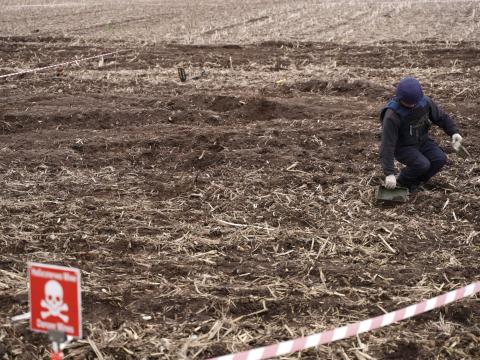Streamlining Coalition Mission Network Participation
NATO and eight coalition nations participating in the Coalition Warrior Interoperability eXploration, eXperimentation and eXamination, eXercise (CWIX) are working to reduce the amount of time it takes to join coalition networks in the future. On average, it took a year or more for a nation to join the Afghan Mission Network, but officials hope to trim that down to a matter of weeks, says Lt. Col, Jenniffer Romero, USAF, the CWIX Future Mission Network focus area lead.
“On average, it was taking a year, maybe 18 months, for a nation to join the Afghan Mission Network, and usually we don’t have that much time,” says Col. Romero, who also serves as the chief, cyber assessments for the U.S. Joint Staff J6 Command, Control, Communications and Computers Assessments Division.
The network for future operations will be a federated network modeled after the Afghan Mission Network, for which NATO offered the core infrastructure that participating nations could connect with using their own networks. Col. Romero explains that the goal is to have core services up and running on “day zero,” which she defines as the day pre-deployment orders drop. “Our goal is for the lead nation or lead organization to have the core up and running on that day and for people to be able to join within weeks as opposed to months and months,” she says.
To streamline the process, officials are creating templates of instructions for joining future coalition networks, which NATO officials refer to as the Future Mission Network and U.S. officials dub the Mission Partner Environment. For the CWIX exercise, which runs from June 3-20, they have built a mission network that includes core services such as voice, chat, email and document handling. “We’re assessing those core enterprise services on a future mission network that was built for CWIX 13 specifically for that purpose,” the colonel states.
Col. Romero discloses that some have questioned the need to assess a mission network since the Afghan Mission Network proved the concept works. She points out, however, that the coalition network in Afghanistan was never formally assessed and documented for minimal requirements. “That’s what we’re doing with the core enterprise services. Last week, we assessed templates that we built for joining instructions. Eight other nations plus two NATO entities helped us build re-usable templates for joining instructions,” she reports.
The joining instructions were modeled after those used for the Afghan Mission Network and other exercises and events. The new instruction templates will continue to be refined in future exercises, such as Combined Endeavor, an annual exercised sponsored by European Command.
Major challenges remain for building future mission networks, including cybersecurity and governance. Cybersecurity is seen as such a daunting challenge, in fact, that CWIX participants hesitated to take it on. “Security is obviously a huge issue. How that best fits in with these joining instructions was challenging. We offered it up to all of the nations and asked who wanted to take the lead on doing cybersecurity, and of course, none of us raised our hands, including me,” Col. Romero reports. “But we realized it needed to be included, so we took a two-page template and handed it off to the National Security Agency. They very kindly took it and came back with—for lack of a better term—agnostic security guidance, meaning that any nation could follow it. We’ve been assessing those this week.”
The security concerns are more about people than technology. “It’s a matter of trust. We’re asking mission partners to trust us on a variety of things—that we’re not going to exfiltrate their data or that we won’t bring on a virus to the network because it is a shared network. It’s like taking your kids to school when they have chicken pox if you introduce a virus into the network.”
She lists governance as the second major issue. “Governance is a real challenge, and overcoming that is slowing the process down. How do we govern something that’s dynamic and that may look different each time,” she asks. The colonel reveals that the United States and NATO are taking different approaches. The United States prefers a network environment that can be used for virtually any exercise or event, whereas the NATO approach is more event-specific, “should there be another Libya or heaven forbid, another Iraq.”
The results of the CWIX assessment will be widely distributed within NATO, participating nations and the Coalition Interoperability Assurance and Validation (CIAV) community. CIAV is an ongoing international working group, who assesses software to be installed on the Afghan Mission Network. The group was instrumental in building the CWIX mission network, which is bridged at the Hague in the Netherlands to form a mission network.
The CWIX assessment already has proven enlightening, says Col. Romero. “We were very naive when we started, thinking this would be easy. We found out that just taking baby steps is a Herculean effort with multi-national participation,” she says. But she ends on a positive note. “Everybody has worked very hard to make this happen, and it’s been fantastic. I would have never dreamed that so many nations would work together for a common goal as well as they have. It has been enlightening and surprisingly positive.”




Comments